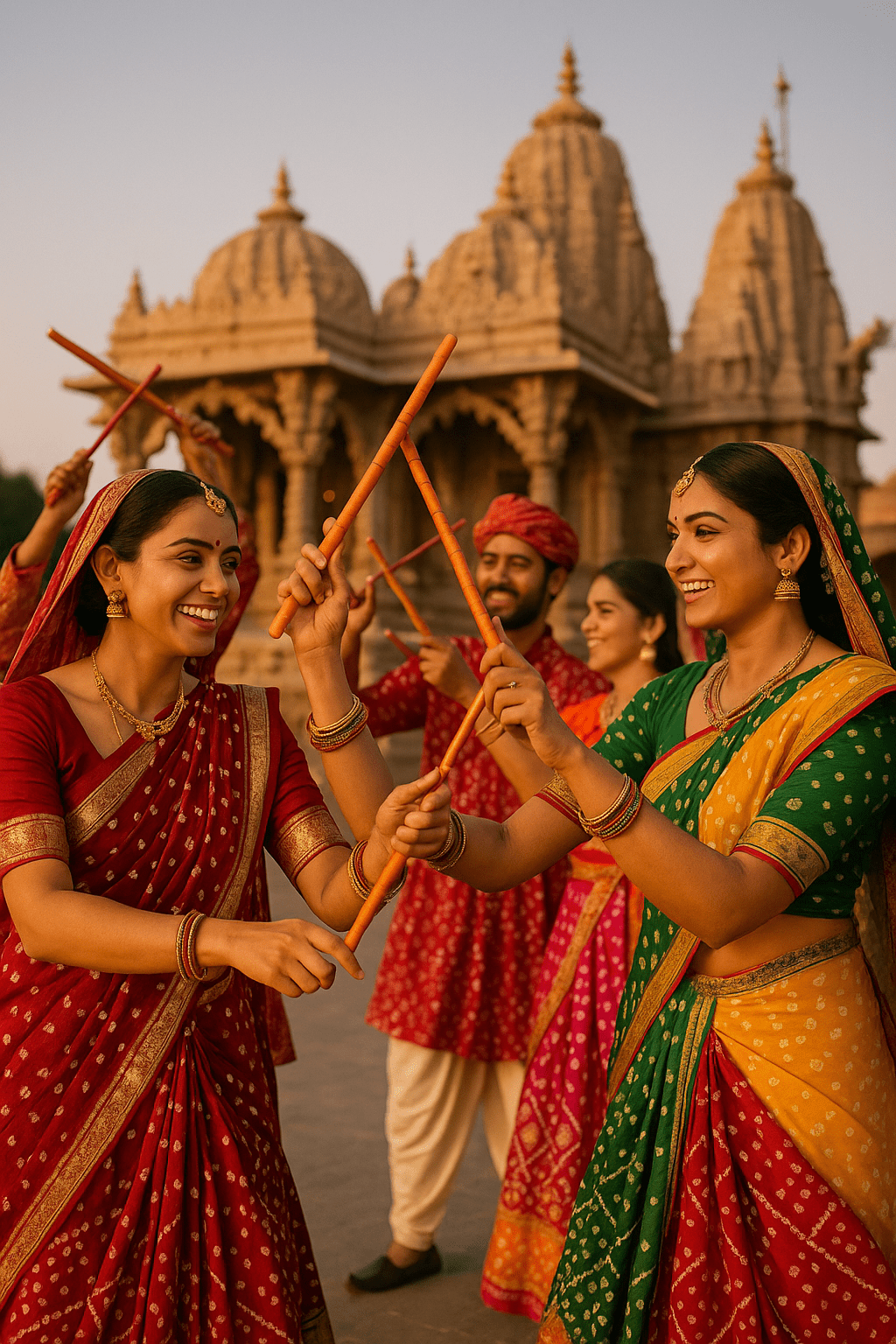
Gujarat, a state known for its vibrant culture and rich heritage, is also home to a stunning variety of sarees. Each saree from this region tells a unique story, reflecting the state’s historical influences, artistic traditions, and unparalleled craftsmanship. From the intricate Bandhani and Patola weaves to the colorful Gharchola and Tanchoi sarees, Gujarat’s sarees are a testament to the state’s diverse cultural tapestry. Let’s explore the enchanting world of Gujarati sarees and the stories they tell.
One of the most iconic sarees from Gujarat is the Bandhani saree, known for its distinctive tie-dye patterns. The term “Bandhani” comes from the Hindi word “Bandhan,” meaning to tie. This ancient art involves tying small portions of fabric with threads and then dyeing the fabric to create intricate patterns. The result is a vibrant saree adorned with dots, circles, squares, and other designs.
Bandhani sarees are primarily produced in the regions of Kutch, Jamnagar, and Saurashtra. Each region has its own unique style and color palette. The process of making a Bandhani saree is labor-intensive, requiring great skill and precision. The sarees are often dyed in bright colors such as red, yellow, blue, and green, symbolizing joy and prosperity. Wearing a Bandhani saree is not just a fashion statement but a celebration of Gujarat’s rich cultural heritage.
Patola sarees are another jewel in Gujarat’s textile crown, renowned for their complex double ikat weaving technique. This process involves dyeing the warp and weft threads before weaving them into intricate patterns. The precision required for this technique is immense, as both sets of threads must align perfectly to create the desired design.
Patola sarees are traditionally woven in the town of Patan by the Salvi community, who have preserved this craft for centuries. These sarees often feature geometric patterns, floral motifs, and traditional designs such as elephants, parrots, and dancing figures. Patola sarees are known for their durability and vibrant colors, which do not fade over time. Each Patola saree is a masterpiece, reflecting the weaver’s skill and dedication.
Gharchola sarees are synonymous with Gujarati weddings, often worn by brides as a symbol of auspiciousness and marital bliss. These sarees are characterized by their grid-like patterns, created using the Bandhani tie-dye technique on a silk or cotton base. The grids are usually adorned with small motifs such as flowers, peacocks, and traditional symbols, often highlighted with zari (gold or silver thread) work.
Gharchola sarees are typically red or maroon, colors that signify good fortune and prosperity in Indian culture. The making of a Gharchola saree involves a blend of techniques, including tie-dye and intricate weaving, making it a true embodiment of Gujarat’s rich textile heritage. Wearing a Gharchola saree is a cherished tradition, passed down through generations as a symbol of love and familial bonds.
Tanchoi sarees are a luxurious addition to Gujarat’s saree repertoire, known for their rich silk fabric and intricate weaving patterns. The Tanchoi weaving technique involves creating elaborate designs using a single or double warp and multiple wefts. The resulting fabric is densely woven, with patterns that resemble embroidery.
Originally influenced by Chinese weavers, Tanchoi sarees have evolved to incorporate traditional Indian motifs such as paisleys, flowers, and birds. These sarees are often woven in vibrant colors, with the designs highlighted by the interplay of light and shadow on the silk fabric. Tanchoi sarees are a favorite choice for formal occasions and weddings, reflecting the opulence and sophistication of Gujarati craftsmanship.
Rabari sarees are inspired by the vibrant and colorful attire of the Rabari community, a nomadic tribe in Gujarat. These sarees are known for their bold patterns, bright colors, and extensive mirror work. The designs often include motifs inspired by nature, daily life, and tribal folklore, reflecting the unique cultural identity of the Rabari people.
Rabari sarees are typically made from cotton or wool, making them suitable for the harsh climate of the region. The mirror work, combined with intricate embroidery, gives these sarees a distinctive look, making them a symbol of Gujarat’s diverse cultural heritage. Wearing a Rabari saree is a way to embrace the tribal artistry and celebrate the vibrant traditions of the region.
The sarees of Gujarat are a vibrant tapestry of the state’s rich cultural and artistic heritage. Each saree, whether it’s the intricate Bandhani, the luxurious Patola, the auspicious Gharchola, the opulent Tanchoi, or the tribal Rabari, tells a story of the region’s history, traditions, and craftsmanship. These sarees are not just garments but expressions of identity, artistry, and legacy, passed down through generations. Embracing the sarees of Gujarat is a way to celebrate the timeless beauty and diverse cultural tapestry that defines this extraordinary state.